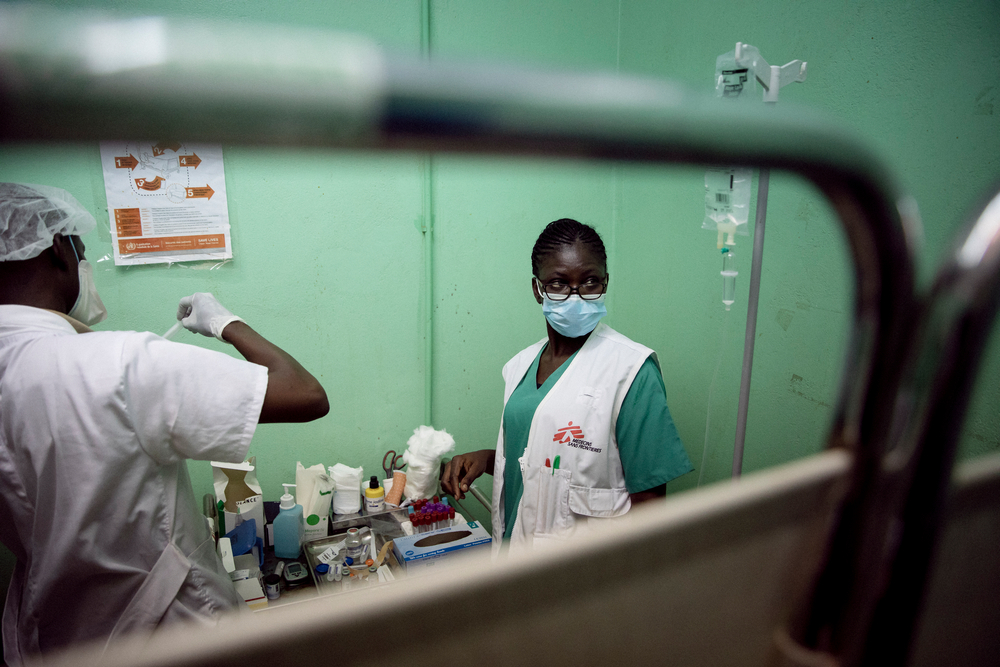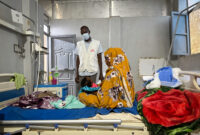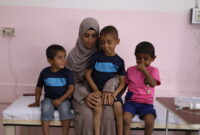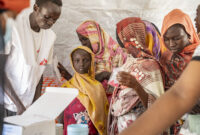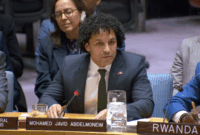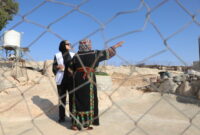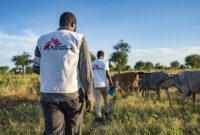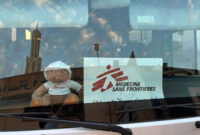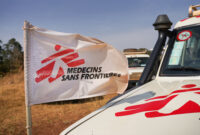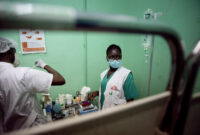Better medical tools, but no better outcome: How we are losing the fight against Advanced HIV Disease
The global HIV response is at the verge of collapse, caught between increasing barriers to best practice for standard care, and a narrative of sustainability forced upon care providers due to decreasing international support. Doctors Without Borders/Médecins Sans Frontières (MSF) is witnessing critical gaps in HIV response, and those related to Advanced HIV Disease (AHD) screening, treatment and prevention are core indicators of the growing crisis.
Despite substantial progress in antiretroviral therapy (ART) scale up, an estimated 30 per cent of people living with HIV continue to present with AHD, contributing significantly to the ongoing HIV-related morbidity and mortality[1]. In 2022, 630,000 people died of HIV-related illness worldwide, proving that HIV related mortality has failed to be lowered in line with the targets.
In MSF supported health facilities, we see the patients behind these AHD figures. In our programs in the Democratic Republic of Congo (Kinshasa and Masisi); Central African Republic (Bangassou and Bangui); and Guinea (Conakry), between 36 per cent and 53 per cent of new patients identified with HIV at the primary healthcare level presented with advanced HIV disease.
Barriers to accessing care, including user fees, distance to the health facility, and insecurity or stigma, account for patients arriving late to seek care in our projects. Doctors at the MSF supported service for AHD at Donka Hospital in Conakry, Guinea, face some of the most challenging cases of advanced HIV – around one in five patients will not survive. However, the medical staff find the strength to keep working and helping as many patients as they can.
Since 2017, the World Health Organization has recommended that all adults entering or re-entering care receive a CD4 test to identify AHD and start appropriate care. A package for early diagnosis and management of the main opportunistic infections was well defined. The roll-out of this package has been very slow and in practice rarely done, predominantly due to funding gaps. The Covid-19 crisis strongly reduced the capacity of domestic resources for health in many countries, making any significant progress dependent on external funding. With the continuous decrease of international funding for HIV since 2018, the space to start implementing or scaling up AHD basic package of detection and care is very limited, at hospital level and more so at primary healthcare level.
For instance, Guinea included a module on AHD for the first time in its latest Global Fund funding request (for the grant 2024-2026). But, to fit in an already overstretched overall budgetary envelope, the foreseen amount for AHD is ludicrously small ($224,330 CAD out of $77,767,500 CAD HIV grant); with these restricted resources the country will not be able to cover even a fraction of the need.
Prices of commodities for AHD are a key element that also influences the number of people who access screening and care. The ‘Time for $5’ campaign by MSF shows how diagnostics producer Cepheid, owned by US corporation Danaher, vastly overcharges low- and middle-income countries for their ‘GeneXpert’ tests used to diagnose diseases such as tuberculosis, HIV, hepatitis, Ebola and STIs. A recent MSF study shows that Cepheid and Danaher could be charging $5 USD per medical test and still make a profit, but instead, they triple or quadruple that price, even in the world’s poorest countries. As a result, millions of people today are deprived of accessing lifesaving tools.
Another obstacle in AHD care is the removal of the CD4 machines from the market, and in particular the near POC PIMA devices from Abbott and BD FACSPresto, without making suitable alternatives available. If these Cartridges are still produced for the existing machines, this will cease to be the case soon, because the test is considered not profitable enough anymore. To date, CD4 is an essential gateway into lifesaving care; no CD4 diagnosis means (too) late diagnosis with precious time lost to reverse AHD and save lives. Without widely available CD4 cell count testing, ending AIDS as a public health threat will be impossible.
While countries are delaying implementation of the basic AHD package because of lack of funding or access related to CD4 testing or other laboratory testing, like LAM-TB, progress is lacking in the direction of a needed extended detection and care package for AHD. This includes histoplasmosis and other fungal infections, severe bacterial infections and Kaposi’s sarcoma (KS) cancer [2] – an aggressive disease that causes lesions in the skin, mouth, throat, lymph nodes, and organs. It is a significant burden in regions with a high prevalence of HIV, despite being treatable and will lead to death if left untreated. In early pre-ART times, it was the tell-tale sign of AIDS and today remains one of AIDS neglected opportunistic infections. Treatment includes chemotherapy or radiation, which is not always available in low- and middle-income countries. And when it is available, capacity is often limited (one service in one hospital for an entire country) and very expensive, leaving most of the affected people out of care and at risk of a painful death.
The picture above is quite depressing. It stands in harsh contradiction with the fact that today more tools to fight HIV exist than a few years ago. Long-Acting PreP is a promising prevention tool that needs to be made available at an affordable price in low-income countries. Rapid Point-of-care testing for AHD exists (CD4, TB-LAM, Crag) and a new rapid test for Histoplasmosis is about to arrive on the market. People-centered models, delivered with the support of or by communities and civil society organizations are recognised as the way to go. But will these remain out-of-reach for the people that urgently need it?
A renewed financial commitment from international donors and governments is urgently needed to fill the gaps, and to continue to innovate and break access barriers to end AIDS as a public health threat by 2030. We know how to make a difference to millions of lives, and we know how to prevent hundreds of thousands of deaths, but the common commitment is falling gravely short of the need.
[1] Distribution of advanced HIV disease from three high HIV prevalence settings in Sub-Saharan Africa: a secondary analysis data from three population-based cross-sectional surveys in Eshowe (South Africa), Ndhiwa (Kenya) and Chiradzulu (Malawi) – PubMed (nih.gov)
